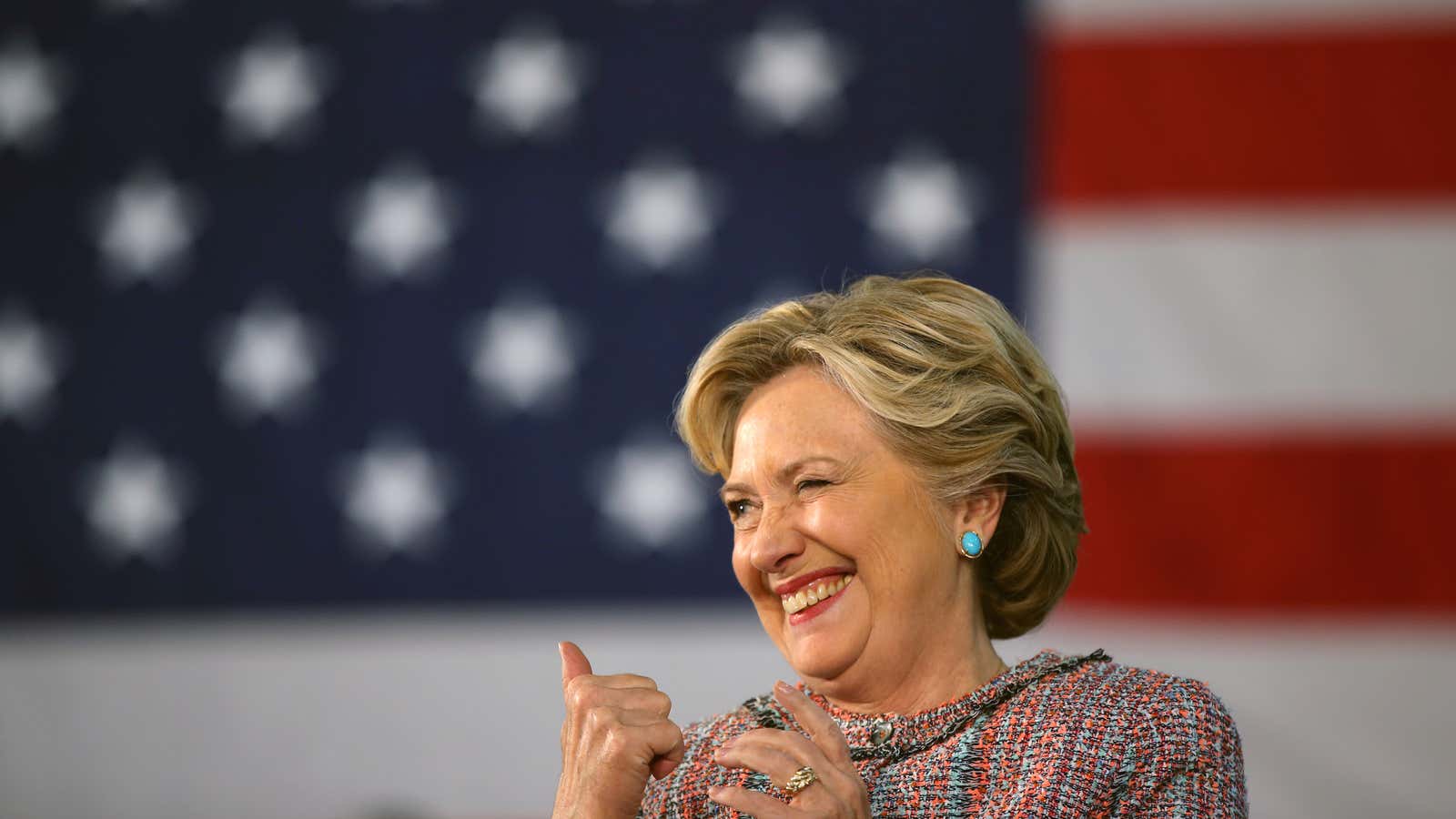As Donald Trump’s presidential campaign unravels, Hillary Clinton’s electoral prospects are looking increasingly rosy. And she’s taking advantage of the momentum to stitch together the most ambitious anti-child poverty agenda since the Great Society of the 1960s.
The Democratic US presidential candidate this week proposed a pair of significant reforms to the Child Tax Credit (CTC). The CTC provides working- and middle-class families with a $1,000 per-child tax benefit. It is one of our most important child subsidies, lifting some 1.7 million children out of poverty each year in 2013.
Yet the CTC is only of limited use to very poor families in its current structure, and entirely excludes those making less than $3,000 per year. Clinton would fix this by allowing the tax credit to kick in faster, starting with the first dollar a family earns, meaning that even those too poor to owe any federal income tax would receive a refund check to help pay for child expenses. This change would pull even more children out of deep poverty.
Clinton would also give an additional $1,000 per year to families with children under four years old. The idea is similar to a bill introduced in Congress this year by Connecticut representative Rosa DeLauro. Extra money for America’s youngest children makes sense as younger children are more likely to live in poorer households. And investing in children during their most formative developmental years has proven to pay off handsomely down the road.
As Vox’s Dylan Matthews points out, it’s a curious policy pronouncement for Clinton to make in the final stretch of her campaign. Because much of the benefit from these reforms go to households earning below $10,000, he writes, they aren’t a “closing argument to win a general election.” The fact that Clinton is launching such an initiative anyway is a sign that, as her path to the White House looks ever more likely, she’s becoming increasingly focused on helping the neediest Americans.
Clinton’s growing lead in the polls may be making her more confident that she will be facing a drastically weakened GOP in Congress come January 2017. This means she could have the opportunity to enact more progressive proposals during her first years in office. Republican senators Mike Lee and Marco Rubio have proposed their own CTC expansion, but it stops far short of Clinton’s proposal. This is not surprising given the GOP belief that refundable tax credits are essentially welfare in disguise. Clinton now appears willing to take this fight head-on. And if Democrats manage to take the House and Senate, the GOP’s qualms would be rendered substantially less relevant.
Still, the ambition on display from the Clinton campaign is about more than political gamesmanship. The sweep of her agenda is similar to the highly successful fight against child poverty in Britain.
In 1999, prime minister Tony Blair declared a 20-year mission to end child poverty. Under his leadership, Britain took a three-pronged approach. It incentivized work and boosted take-home pay through an increased minimum wage and a version of the US Earned Income Tax Credit. It raised incomes for families with an expanded child allowance and a child tax credit, including an extra benefit for the youngest children. And it enacted protections for working families and investments in young children, funding early childhood services like pre-K, daycare, and paid family leave. Within ten years, Britain had cut its child poverty rate in half, reversing a two-decade increase.
Clinton’s platform embraces a number of the key policies that worked in Britain. She would support working families by offering new parents 12 weeks of paid family leave and by subsidizing childcare costs exceeding 10% of a family’s income. She favors a higher minimum wage. She would protect America’s existing Earned Income Tax Credit, which already lifts 3.2 million children out of poverty each year, and would undoubtedly encourage bipartisan reforms to enhance it. And now, she would also improve the Child Tax Credit to provide more help to the poorest and youngest.
Clinton’s child poverty agenda is already ambitious. But if she wins a resounding victory in November, she could use her momentum try and push through even bolder pieces of Britain’s project. She could push for a child allowance that gives families monthly checks to help with the cost of raising kids, for example. If not, then she could at least give parents the option of receiving part of an expanded CTC in periodic payments throughout the year, as the Center for American Progress has proposed. Clinton could also give employees the right to request flexible work arrangements to accommodate family needs—a policy she supported in 2008 after its success in Britain.
The US desperately needs to import these British reforms. Nearly 20% of all American children lived in poverty in 2015, according to recent US Census Bureau data. With the White House in her sights, Clinton now looks determined to use her power to attack this moral scourge.
